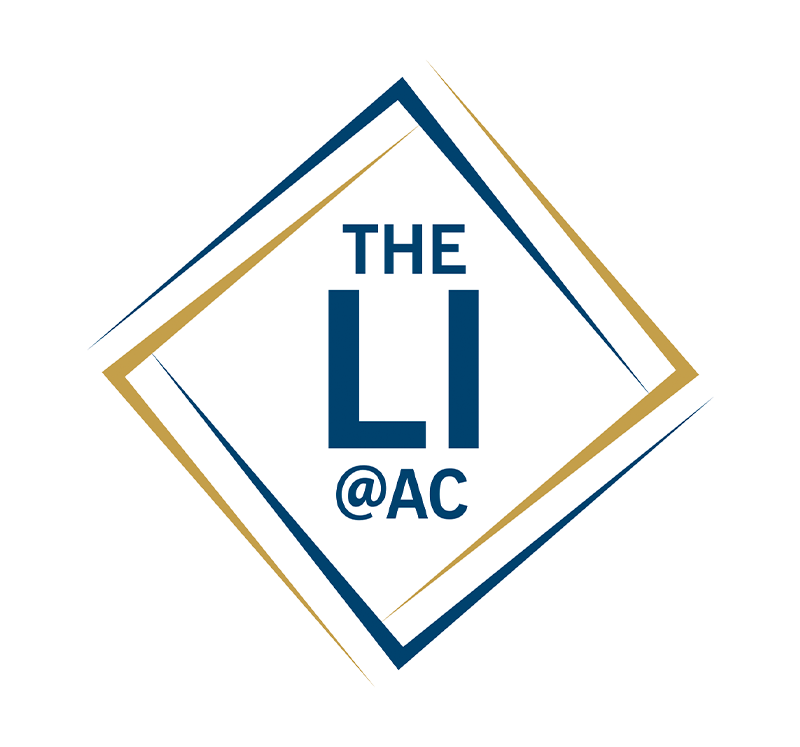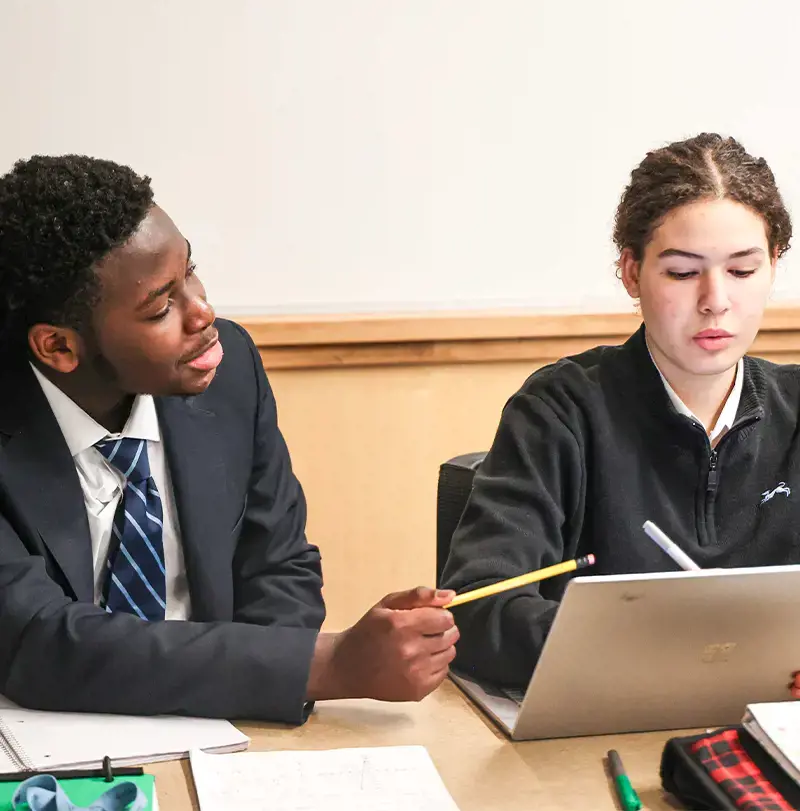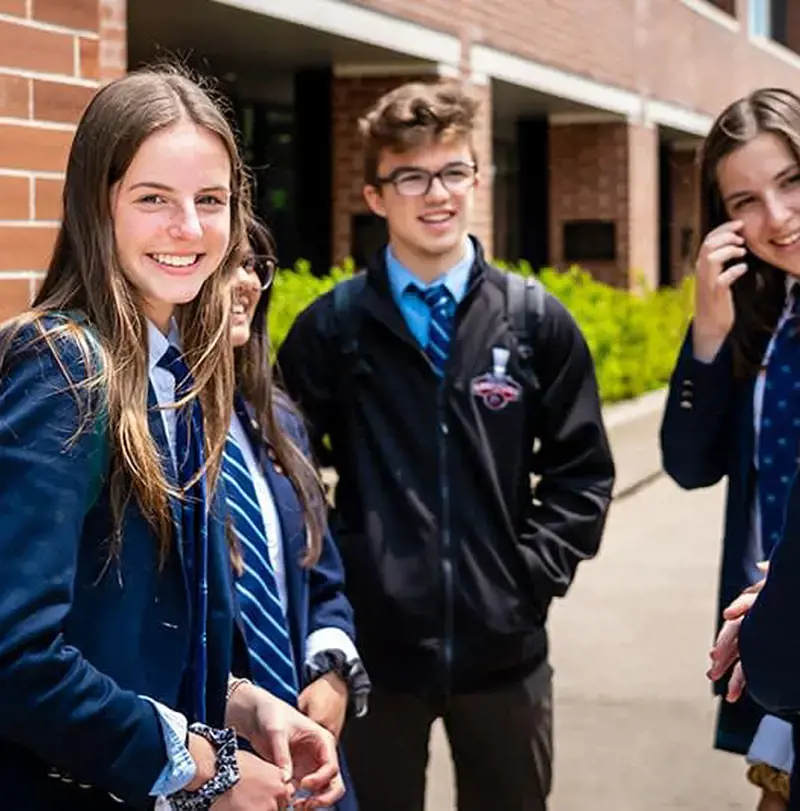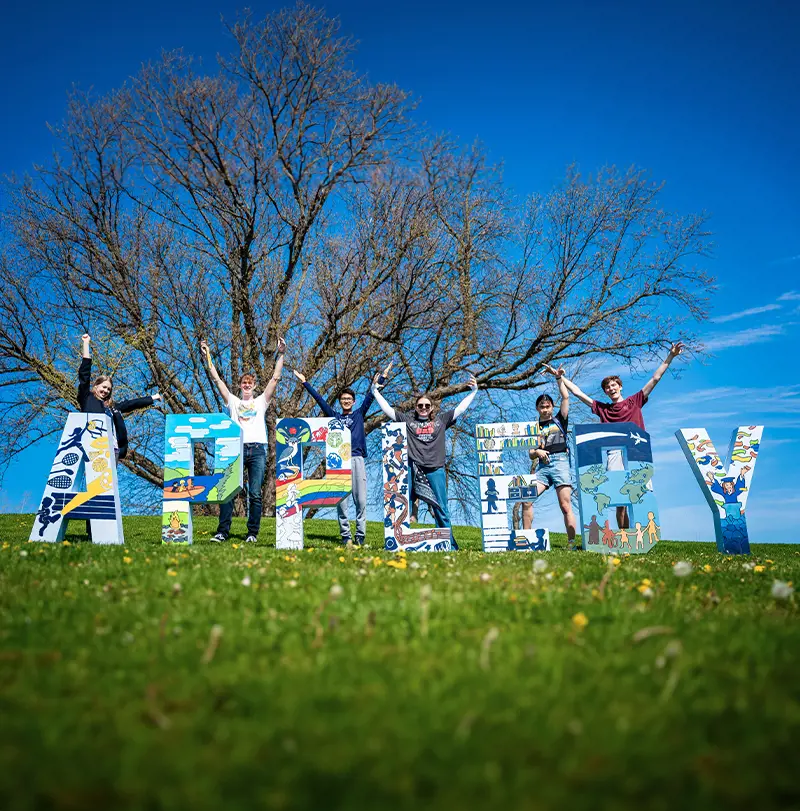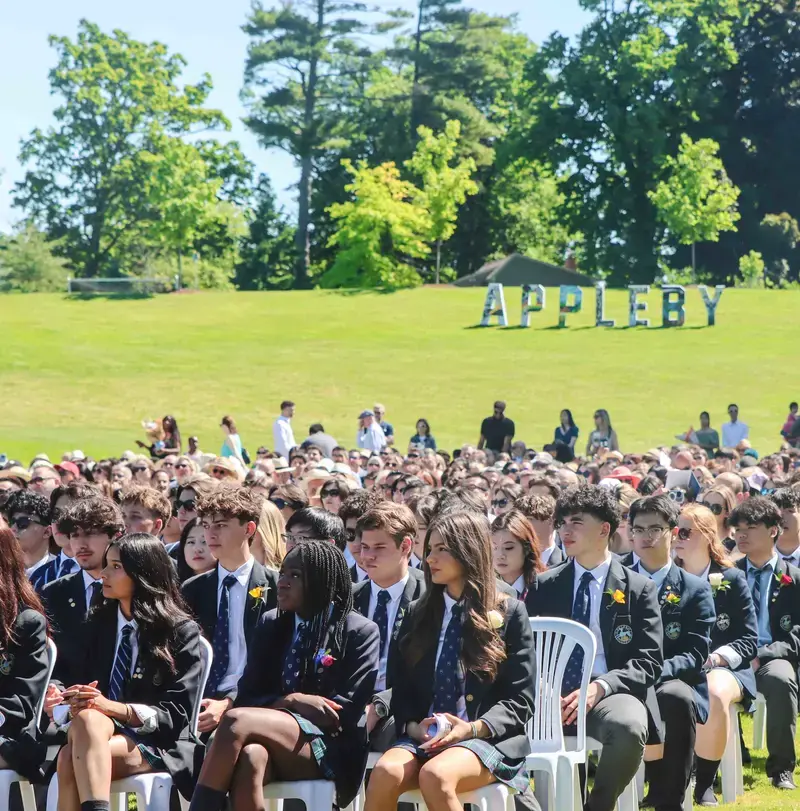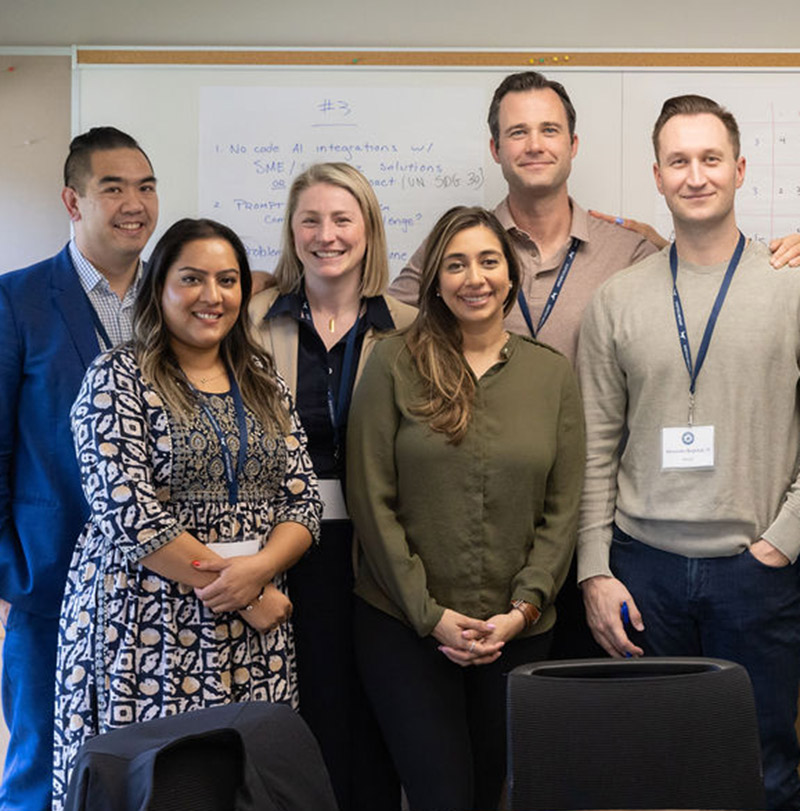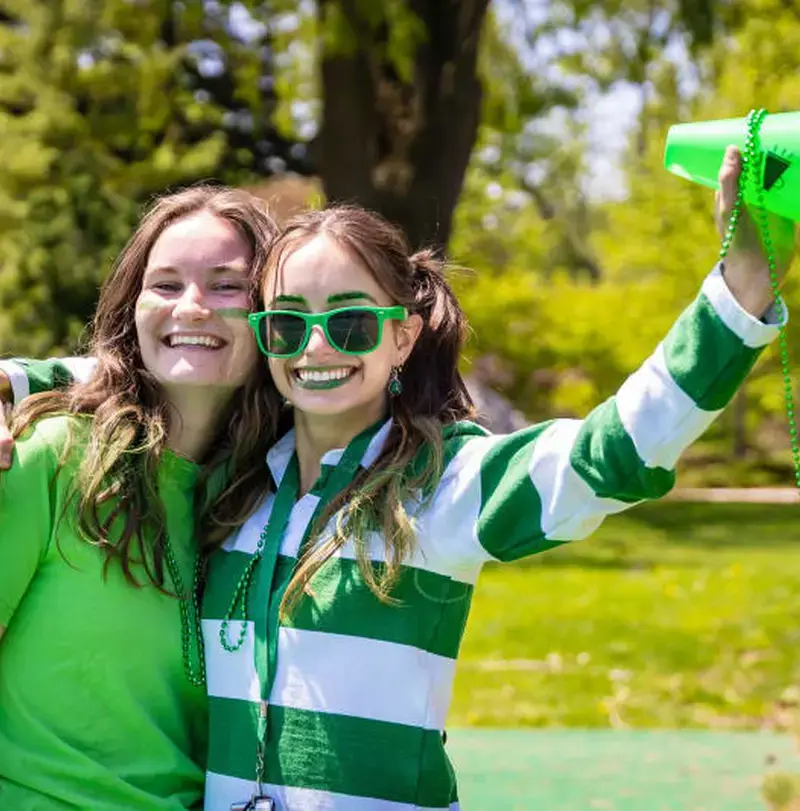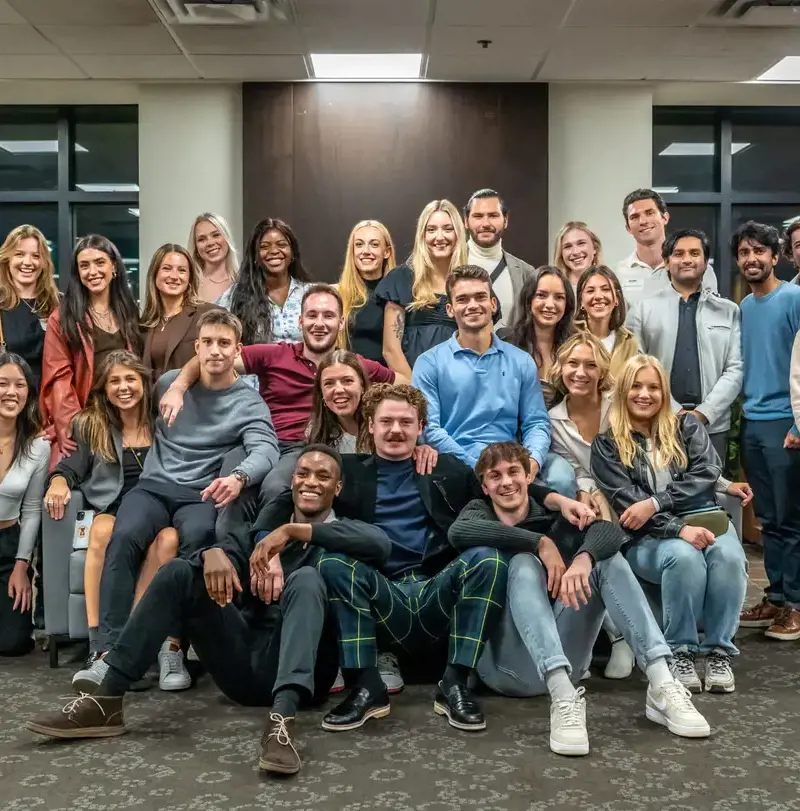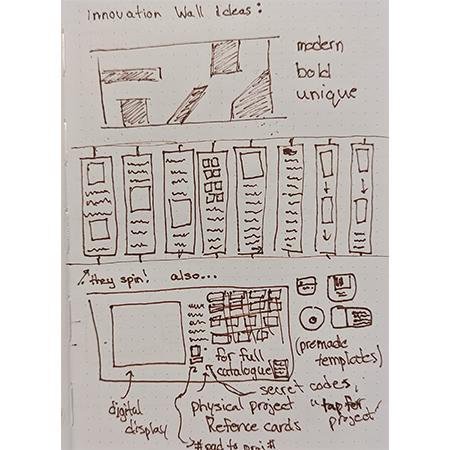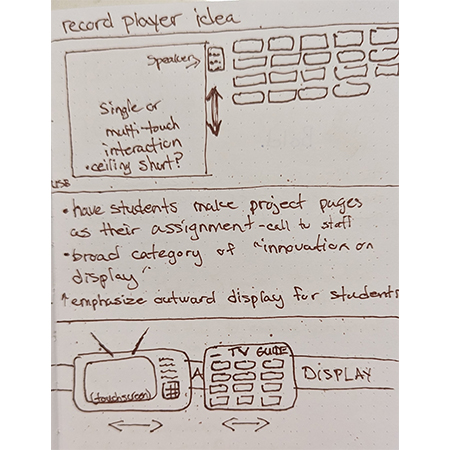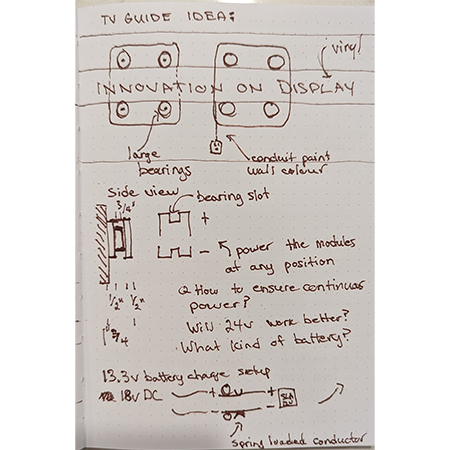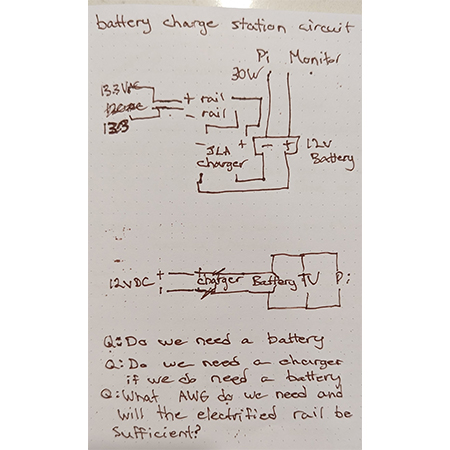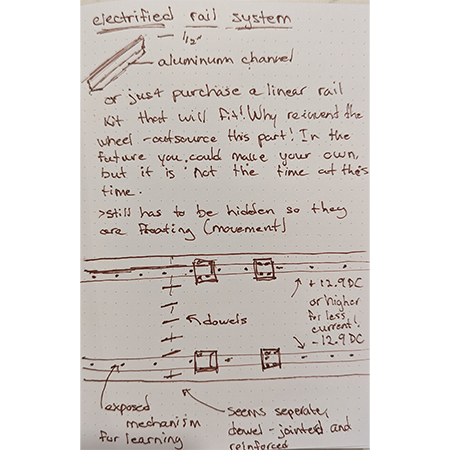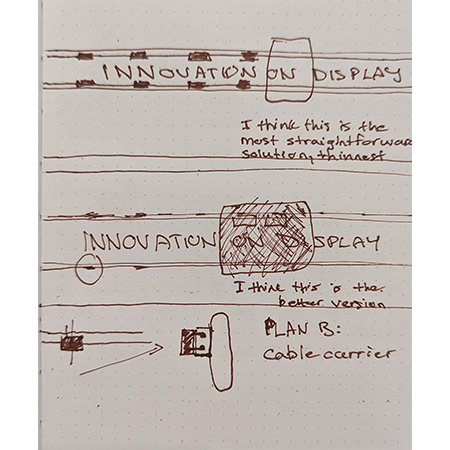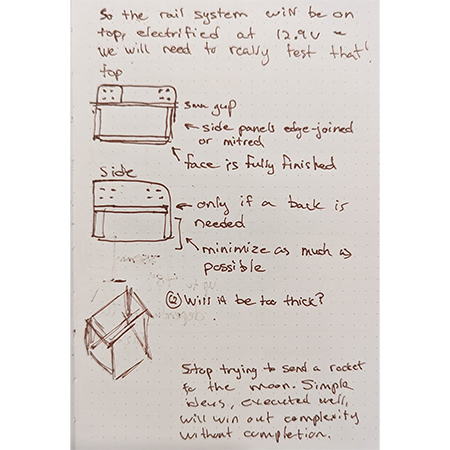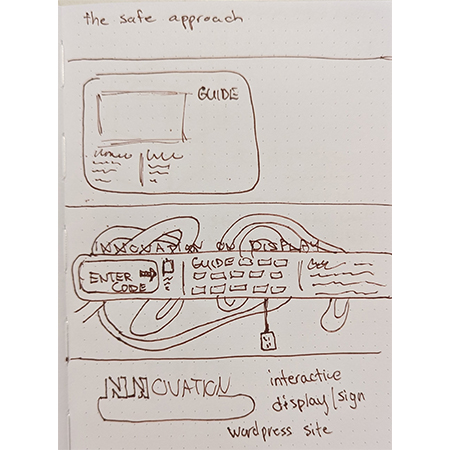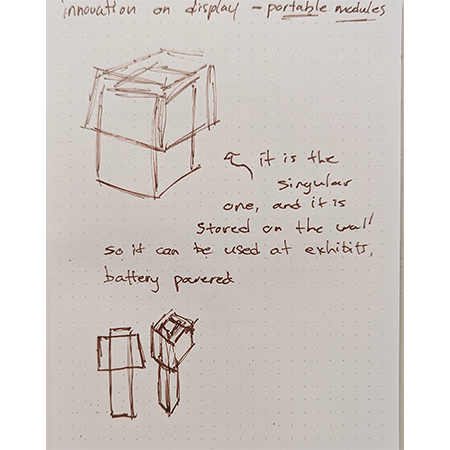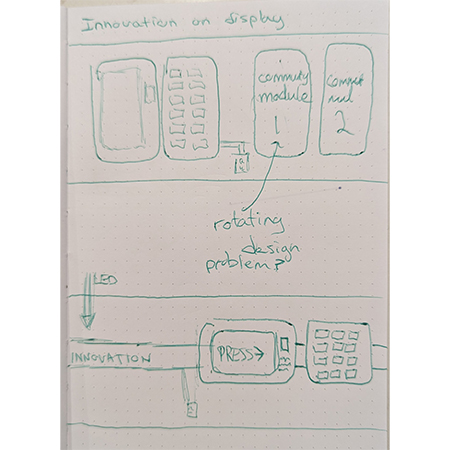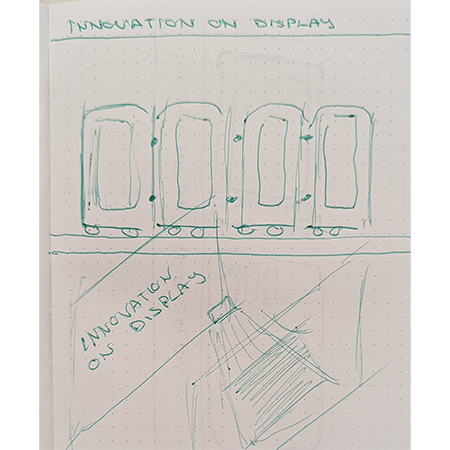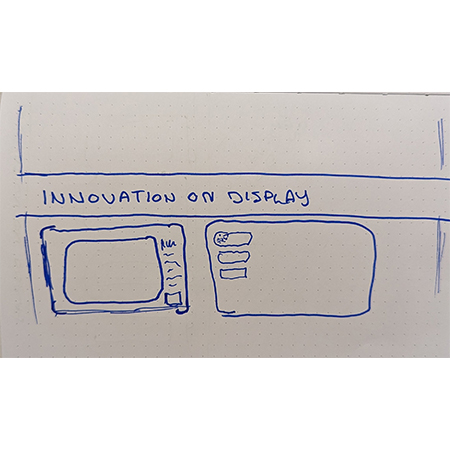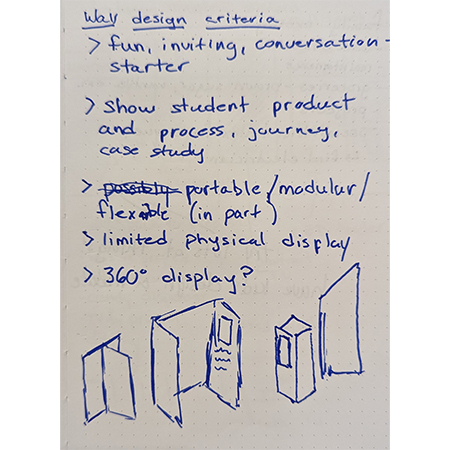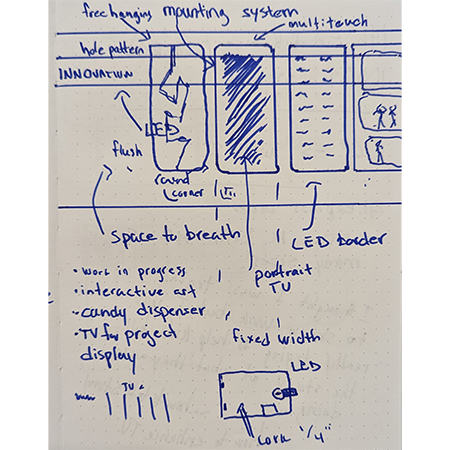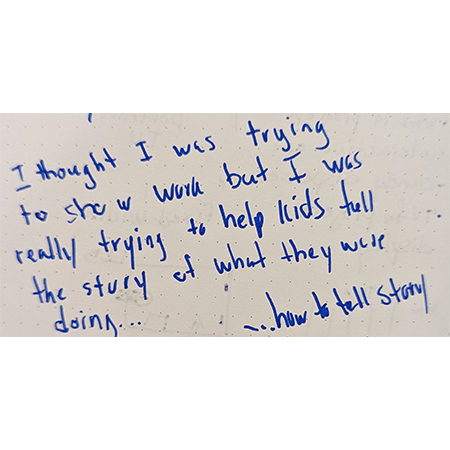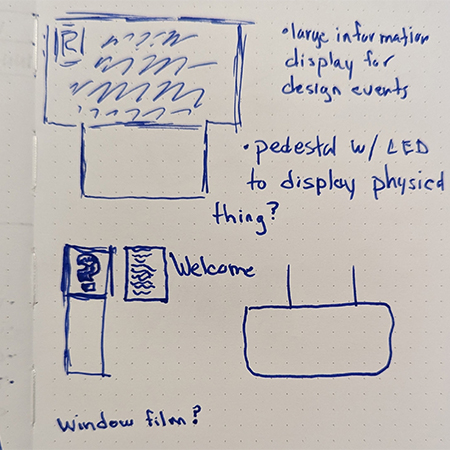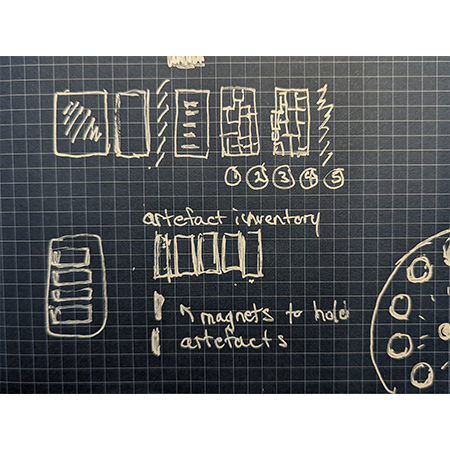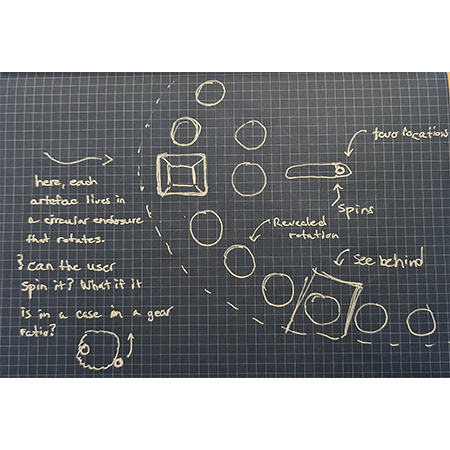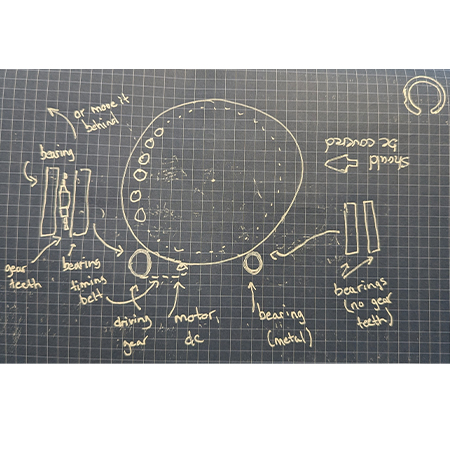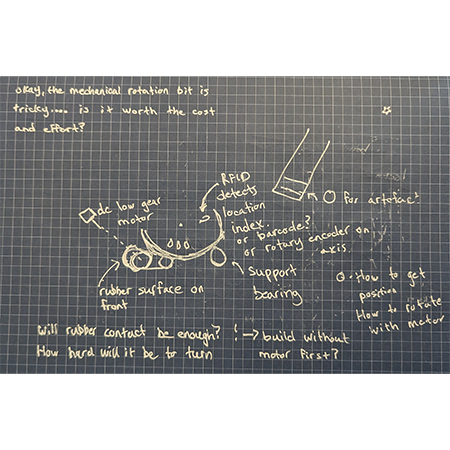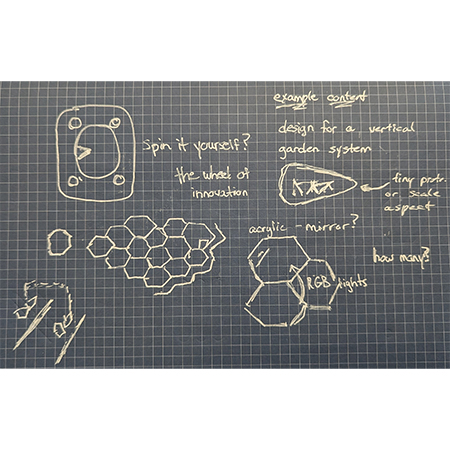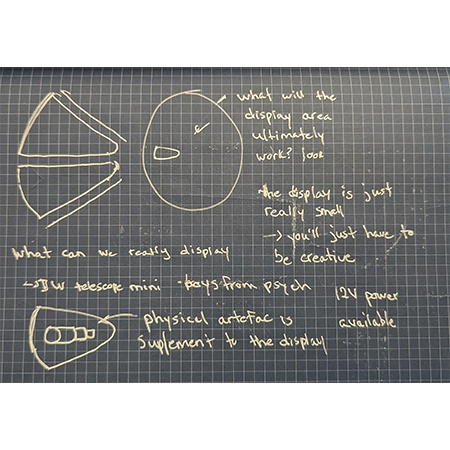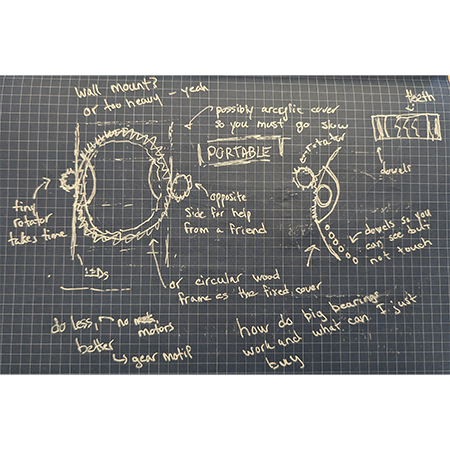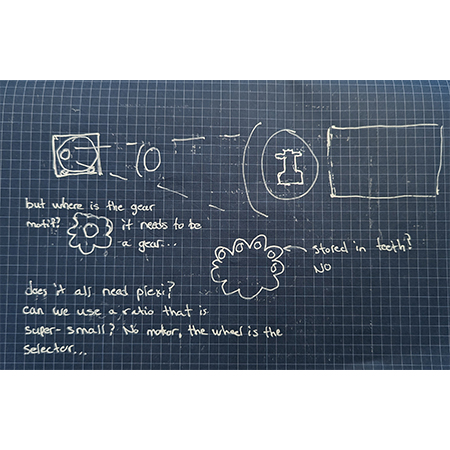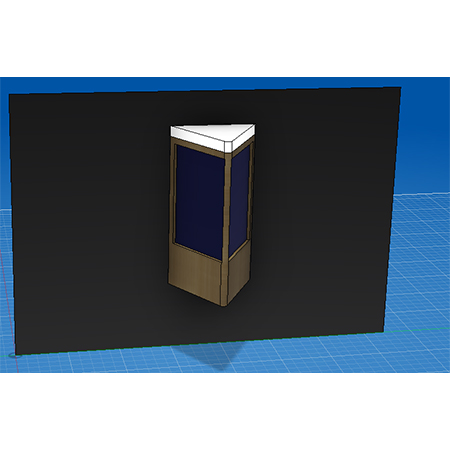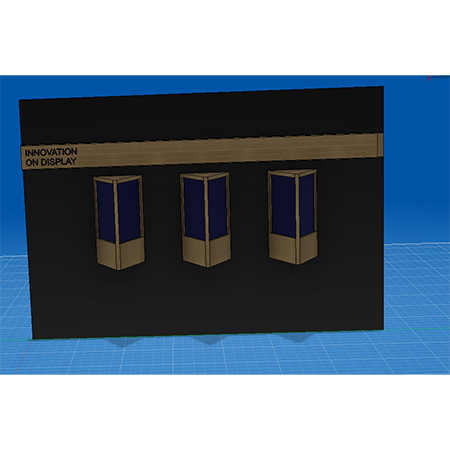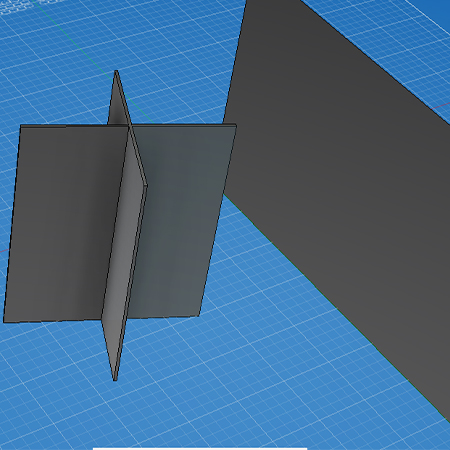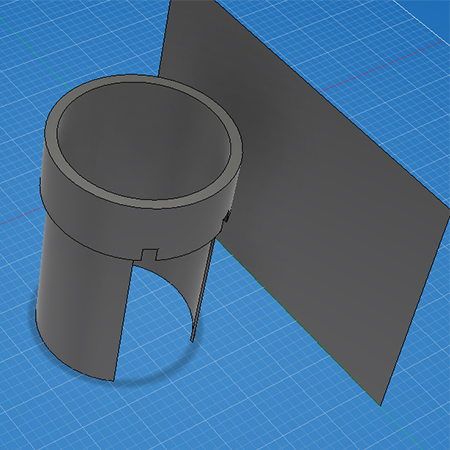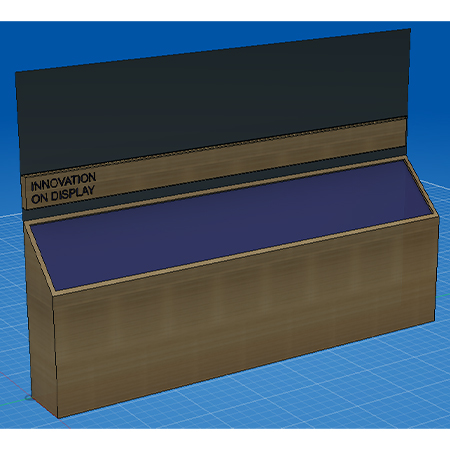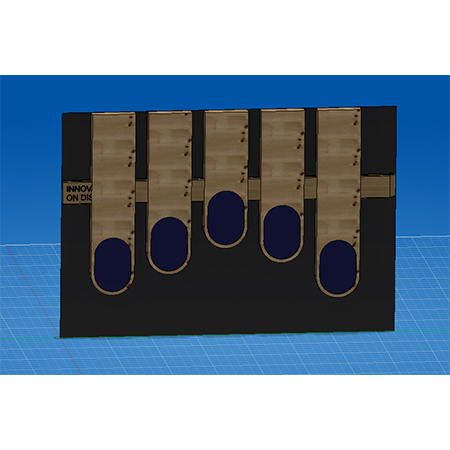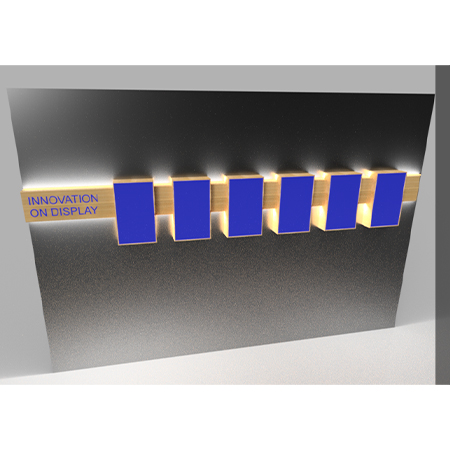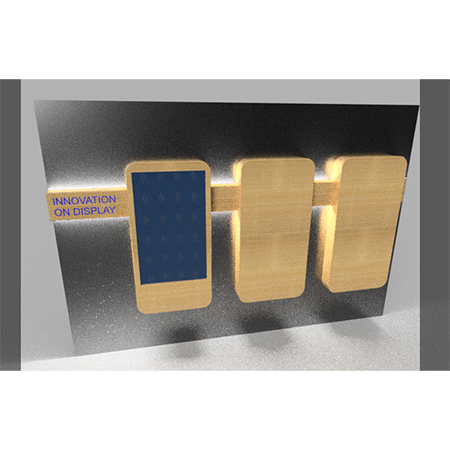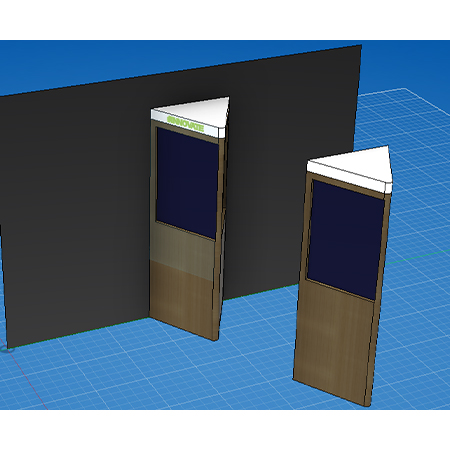Innovation on Display
by Fox Bright
When I walk into our Design Lab, on my daily sojourn for coffee, I pass two completely blank walls. A rare sight in a school rich with history. Students gather in this hub between classes, they hurry by on their way to something else, and they hunker down together waiting for their teacher to arrive. The area is informal, undefined, liminal. Our built environment has a profound effect on how we spend our energy and our time together. I wondered, how can we ask more of this space?
This Innovation Project began with the idea of using this space to elevate the great work - past and future -- that students are producing around campus, particularly in the area of design thinking. What better way to inspire others to think about their own agency to improve the world than to share great examples? Yet I was stumped on the details. What would it look like and what could it do? Is it about sharing physical artefacts, digital work, or something else? And how will it possibly cut through the hustle and bustle of everyday life?
I took my journal camping in late July. I let my mind wander around variation after variation on some kind of "display". Some ideas were practical, some overly ambitious, and others, just ridiculous. I played with the idea of having moving parts that students can spin to reveal projects. I thought of more immersive approaches where you walk inside of a display. I also wanted to be able to detach it from the wall and use it as a portable exhibit. I was in over my head with ideas.
I started to get more serious mid-summer about the project. I abandoned a personal favourite idea of building a retro-style TV with TV guide that lets you select from student content. Working at scale, I developed a few renderings of ideas that I could use as a basis for feedback from friends and peers.
The technological aspect of this project was also fascinating. I explored just about every display technology available - different points of projection, two holographic strategies, large-format LED displays, and various mechanical systems of creating motion. I researched distributors across the globe. I thought about how we'll hide wiring and what kind of electronics we'll need for each variation.
During this process of discovering what I was actually going to make, I had to wrestle with the point of what I was trying to do. When I'm stuck in a project - and I was - I find it helpful to re-center it around its purpose. At the same time, the purpose was unfolding as I played with different ideas.
I landed on a few central ideas:
- When students do design work, they have a story to tell about how they got there. This is more important than their prototype. The display will be built around stories rather than outcomes.
- Anyone in the community should be able to make a contribution. The display will be built around low-barrier tools like PowerPoint and Canva.
- The final product should encourage interaction between people and the content and speak to the ethos of the design lab.
The current version, forever a prototype…
I decided on moving forward with a five-TV interactive display wall. Putting aside more ambitious ideas, this system has the right amount of flexibility, practicality, budget-consciousness, and impact to meet the goals of the project. Each of the five TVs will serve as individual kiosks for a database of content. Certain content may also span all five TVs. The content will be Canva-created, and thus it will be easily accessible for students and employees to create their own interactive content.
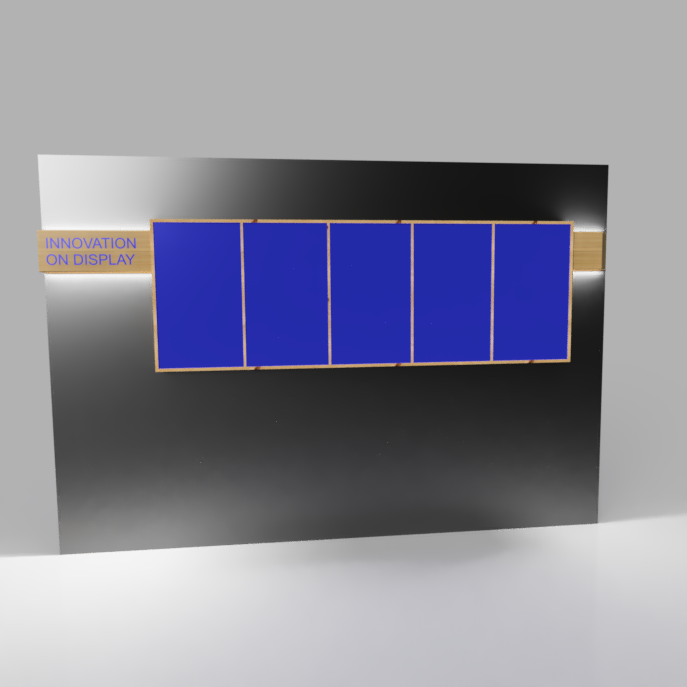
I feel that the scale of the five TVs together adds intrigue here. They invite multiple students to experience the display together. The five 40" TVs were re-purposed from the recent renovation of the design lab, creating space in the budget to complete the project at this scale. Utilizing an IR-touch frame purchased from Aliexpress.com for just $80 each, I was able to convert the TVs to large-format touch screens for a fraction of the cost. Driven by $150 computers (Raspberry Pis), the display units are versatile, open source, and substantially more cost-effective compared to equivalent commercial solutions.
Although the current version makes a lot of compromises from my earlier ideas, progress trumps perfection here. I showed our Senior Two tech design class the individual components and they immediately added ideas and feedback into the story.
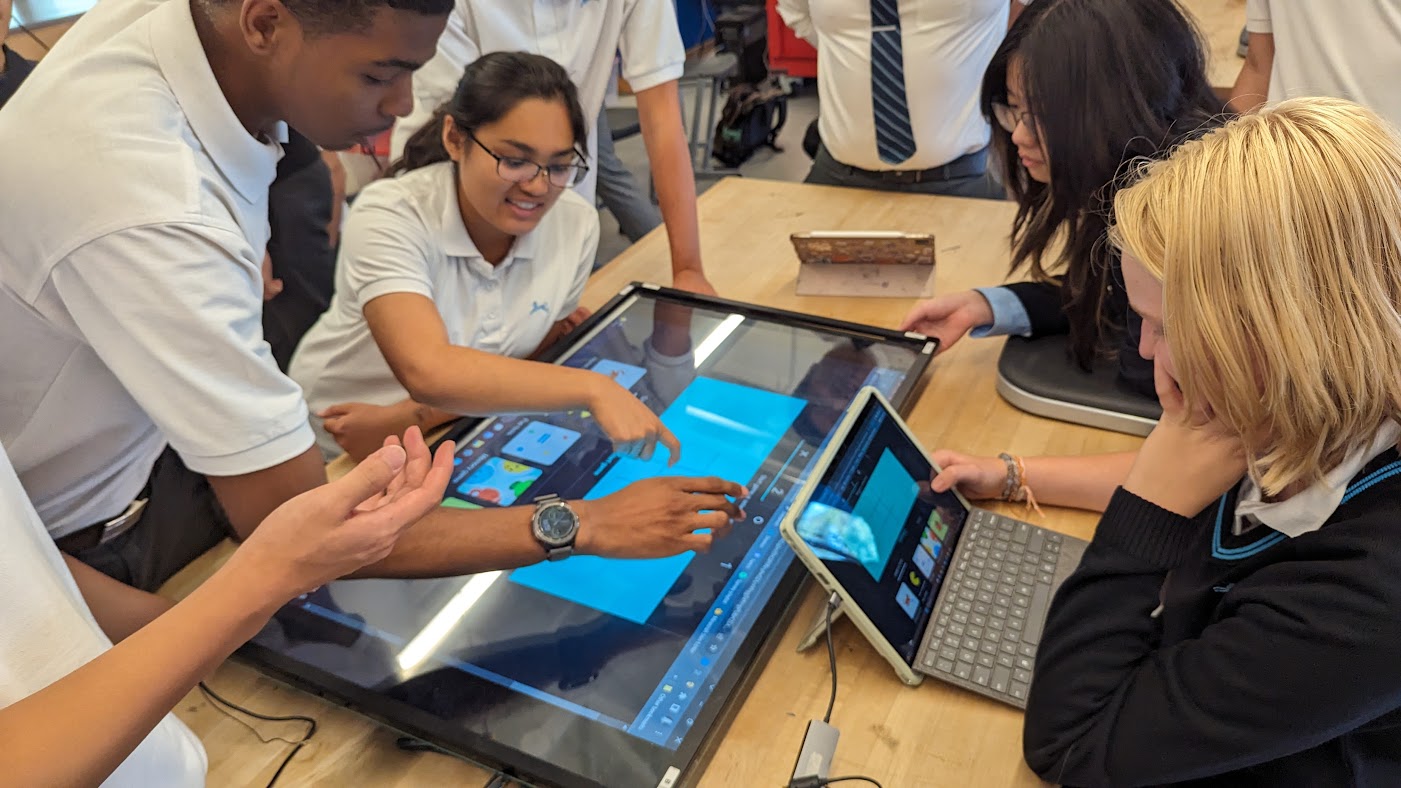
Conversations take the shape of their containers. Right now, my hope for this work is to encourage new connections and conversations between students. The next blog post will report on the technical aspects of getting the project up and running and early reactions to the system.
 |
ABOUT THE AUTHOR FOX BRIGHT - Instructional Design Technologist Devin is a designer, educator, and starter of many hobbies. At Appleby, Devin is an Instructional Design Technologist. Devin works with the Appleby community on creative projects of all kinds. Devin enjoys architecture, industrial design, music, cycling & travel. |
